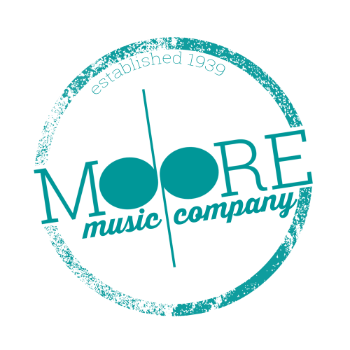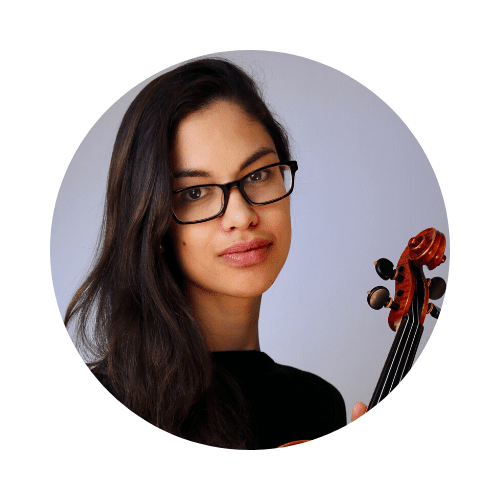This post is part of a series highlighting our lessons instructors! Megan Fisher teaches violin and viola. Originally from Bowling Green, OH, Megan holds a double degree in Biology and Music Performance from the University of Kentucky. She's currently working on her Master of Music degree from the University of North Carolina at Greensboro. She is based in Greensboro, NC, and is an active performer and teacher. Keep reading to learn more about Megan's musical journey and her teaching style!
Interested in signing up for lessons? Start by filling out a lesson inquiry.
How did you get started playing music, and who were your primary teachers?
Our local orchestra teacher was showing the string instruments to my class, and he handed me a viola. It felt right, so I decided to start learning it! I began taking private viola lessons when I was in 8th grade, and I had several different teachers over the years. Nearing the end of high school, I studied with Matthew Daline, the viola professor at Bowling Green State University. Later I studied with University of Kentucky teachers Margaret Karp and Dr. Tze-Ying Wu. I am currently working on my Master's in Music Performance with Dr. Scott Rawls, viola professor at UNCG. I'm really thankful for my lessons with these teachers. Each of them inspired me to improve so much!
Can you share something memorable from your early music experiences?
One memorable moment for me was at the beginning of my freshman year in college. I lived in a dorm at the time, and we were permitted to practice our instruments in the dorms during the day. During the first week of school, a neighbor across the hall slid a note under my door while I was practicing. On her note she explained how much joy it brought her to hear me practicing when she got back to the dorm after a long day, and how she would sometimes stand in the hallway for a moment to listen to me play. I still have that note with me. It meant so much to hear that my music was bringing happiness to someone else.
Can you sum up your teaching style in a short paragraph?
My teaching style is rooted in a few different principles. My goal is to build a solid foundation and posture, to ensure that a student will always be able to play music comfortably. Another important pillar of my teaching is to have students involved in the artistry of their music very early on. In the musical process I will offer some options for interpretation and phrasing, but ultimately musical decisions are made by the student. Respect for one another is very important to me since it allows for open discussion of different ideas and views.
What do you want students to take out of lessons?
My highest priority for my students is to create a love for music. I also want students to leave the lesson feeling like they have the tools needed to improve on their own. I hope through our lessons, students learn problem solving skills that will help them in their musical studies and beyond!
Can you share a memorable experience you've had teaching?
One of my favorite memories was from when I was teaching group classes for the University of Kentucky String Project. I was primarily teaching 2nd grade beginner violins. When teachers introduce rhythms, they often put words to speak along to each rhythm. For example, eighth notes could be a two syllable word such as "apple." I was letting the students pick out words to go with each rhythm, and I asked them to find a one syllable word for a whole note. All the kids immediately shouted, "Dave!" Ever since that day, whole notes have been "Dave" to me.
What equipment or materials do you recommend for beginner students? Intermediate/advanced students?
For beginners, having a solid set of etudes to pull from such as Wohlfahrt/Schradieck, a metronome, and a notebook for lessons is important. I benefit greatly from taking notes after lessons. It helps me to remember my weekly goals in playing. This is a helpful practice that musicians at all skill levels can adopt.
For intermediate and advanced students, I recommend exploring higher quality strings for their instruments. If an instrument upgrade isn't an immediate option, a set of nice strings will make playing much more exciting for advancing students. Also, as posture gets more refined, I recommend exploring chin and shoulder rests that are more specific to the individual way a student holds their instrument.
Thanks, Megan!
Naomi Woods (Director of Music Education and Community Outreach, Violin Instructor) began studying the violin at the age of 9 and holds music degrees from the University of North Carolina at Greensboro and from Baylor University in Waco, Texas. She cannot be trusted to remember anything she said a week ago unless she leaves herself a trail of reminders like breadcrumbs. Naomi lives in Greensboro, NC, with her husband Tyler.



0 Comments